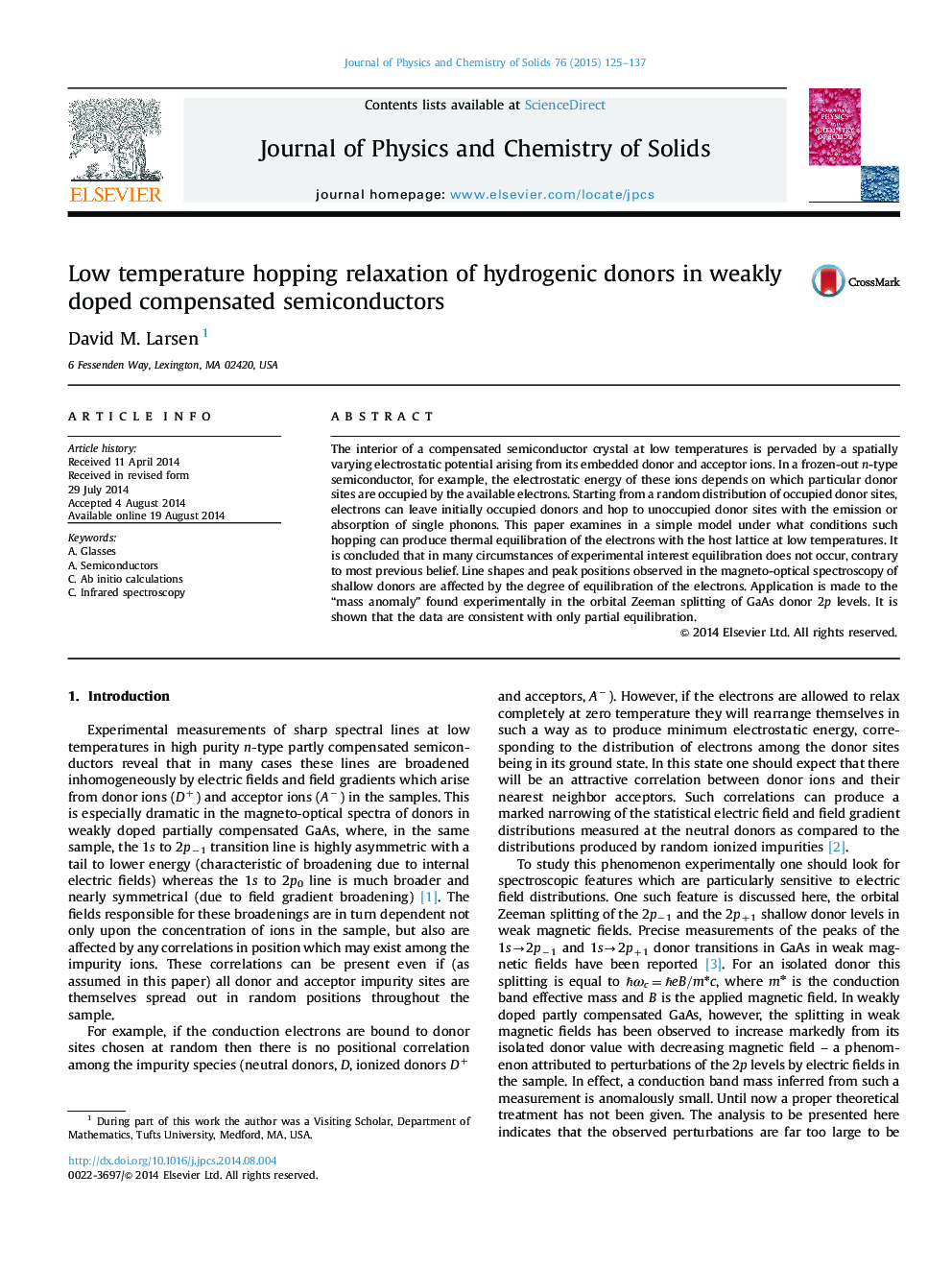| Article ID | Journal | Published Year | Pages | File Type |
|---|---|---|---|---|
| 7921095 | Journal of Physics and Chemistry of Solids | 2015 | 13 Pages |
Abstract
The interior of a compensated semiconductor crystal at low temperatures is pervaded by a spatially varying electrostatic potential arising from its embedded donor and acceptor ions. In a frozen-out n-type semiconductor, for example, the electrostatic energy of these ions depends on which particular donor sites are occupied by the available electrons. Starting from a random distribution of occupied donor sites, electrons can leave initially occupied donors and hop to unoccupied donor sites with the emission or absorption of single phonons. This paper examines in a simple model under what conditions such hopping can produce thermal equilibration of the electrons with the host lattice at low temperatures. It is concluded that in many circumstances of experimental interest equilibration does not occur, contrary to most previous belief. Line shapes and peak positions observed in the magneto-optical spectroscopy of shallow donors are affected by the degree of equilibration of the electrons. Application is made to the “mass anomaly” found experimentally in the orbital Zeeman splitting of GaAs donor 2p levels. It is shown that the data are consistent with only partial equilibration.
Related Topics
Physical Sciences and Engineering
Materials Science
Electronic, Optical and Magnetic Materials
Authors
David M. Larsen,
